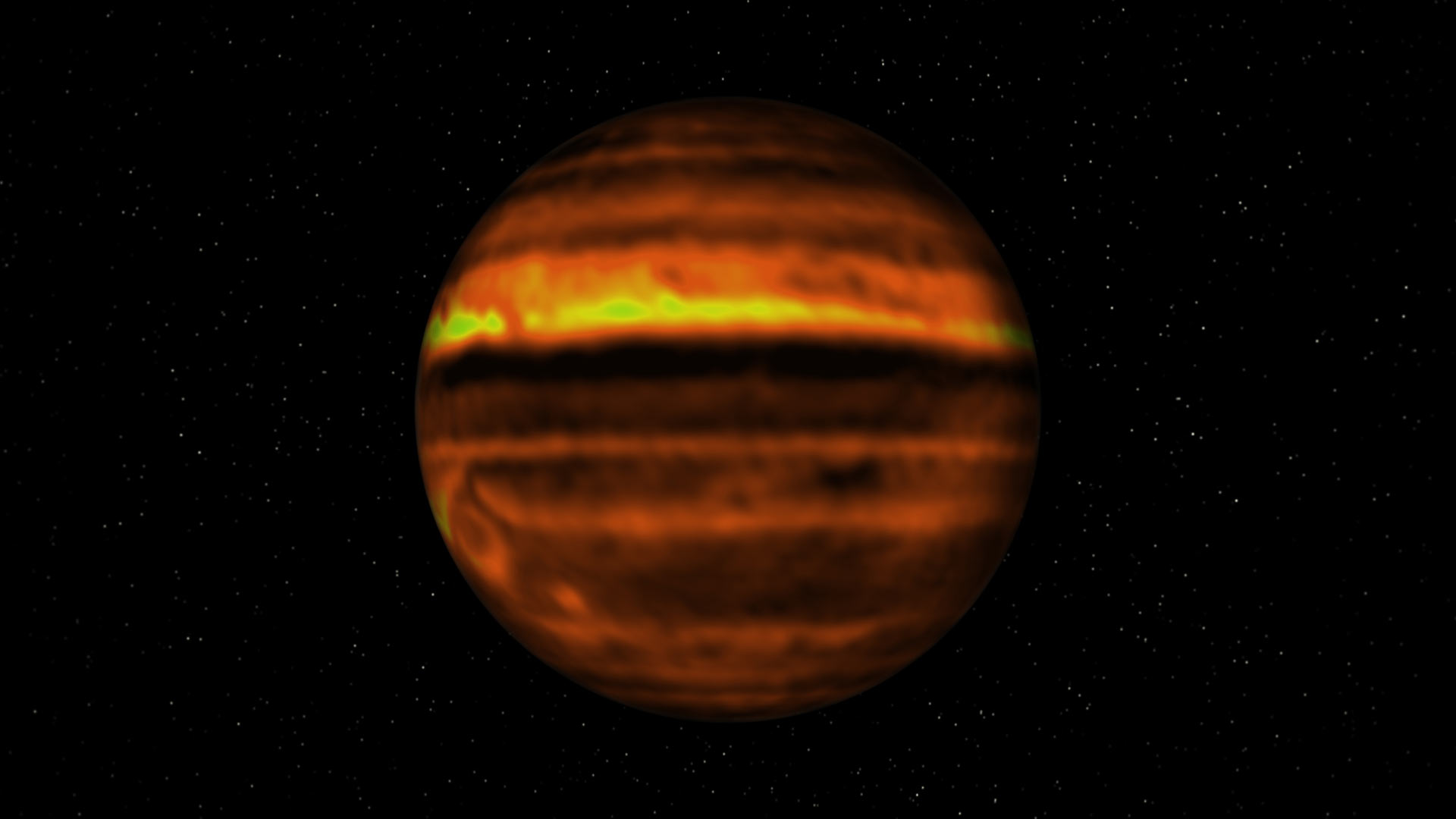
Jupiter is famous for its epic storms and beautiful cloud formations which give it is distinctive stripey appearance. However, these clouds make it difficult for astronomers to see what lies in the atmosphere beneath. Now, a team of astronomers has peered deep into the planet’s atmosphere using the Atacama Large Millimeter/submillimeter Array (ALMA).
When a storm occurs on Jupiter, it causes variations in the atmosphere which affect the bands of brown and white clouds circumnavigating the planet. A storm can be spotted as an eruption of small white clouds called plumes. An eruption occurred in Jupiter’s South Equatorial Belt in January 2017, and astronomers wanted to see what happened in the atmosphere afterward. They used ALMA as well as images from ultraviolet and visible light or infrared telescopes to view different wavelengths during the eruption period.
“ALMA enabled us to make a 3D map of the distribution of ammonia gas below the clouds,” Dr. Imke de Pater, a researcher with the University of California, Berkeley, said in a statement. “And for the first time, we were able to study the atmosphere below the ammonia cloud layers after an energetic eruption on Jupiter.”

The majority of Jupiter’s atmosphere consists of hydrogen and helium, but there are also smaller amounts of methane, ammonia, hydrogen sulfide, and water. In their investigations, the team found that it was ammonia which was most active during an eruption, being brought up from nearer the surface to higher altitudes. The gas even rises above the ammonia ice which forms the outer layer of the clouds.
“Our ALMA observations are the first to show that high concentrations of ammonia gas are brought up during an energetic eruption,” Dr. de Pater said. “The combination of observations simultaneously at many different wavelengths enabled us to examine the eruption in detail. This led us to confirm the current theory that energetic plumes are triggered by moist convection at the base of water clouds, which are located deep in the atmosphere. The plumes bring up ammonia gas from deep in the atmosphere to high altitudes, well above the main ammonia cloud deck.”
The findings will be published in the Astronomical Journal.



